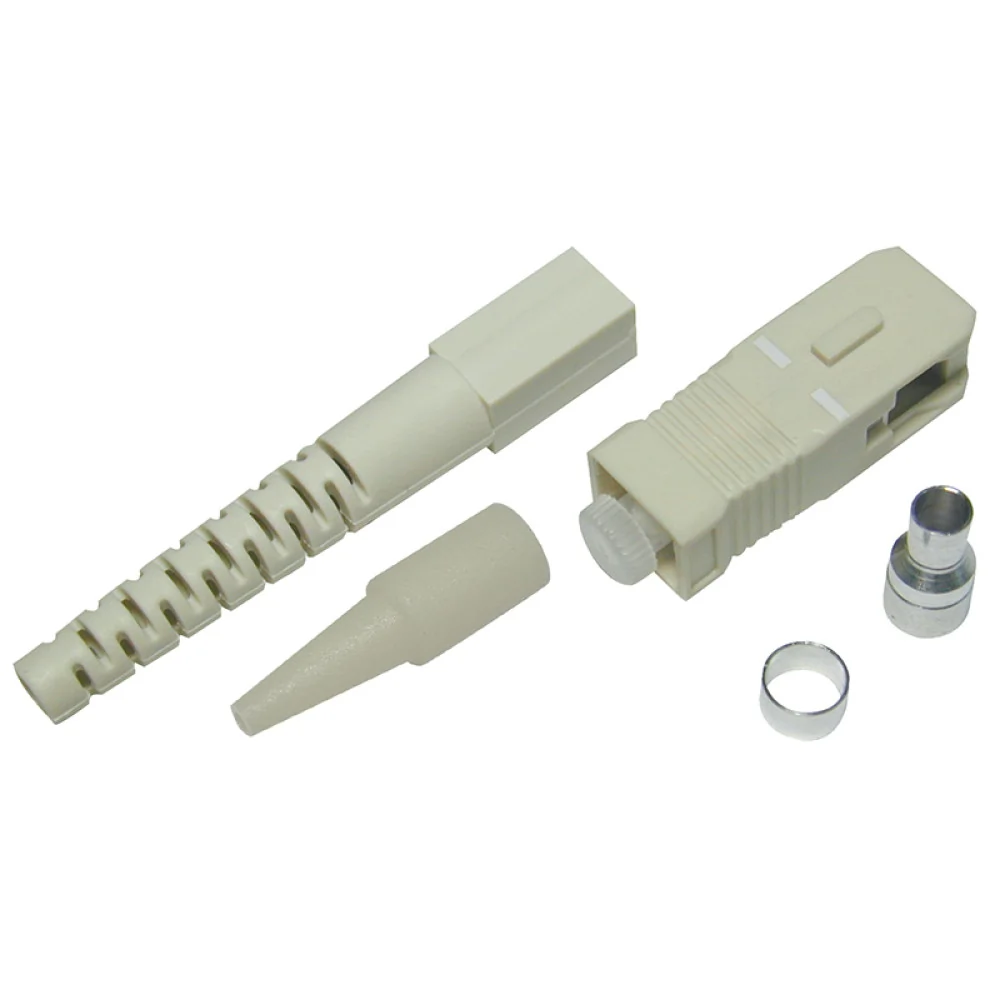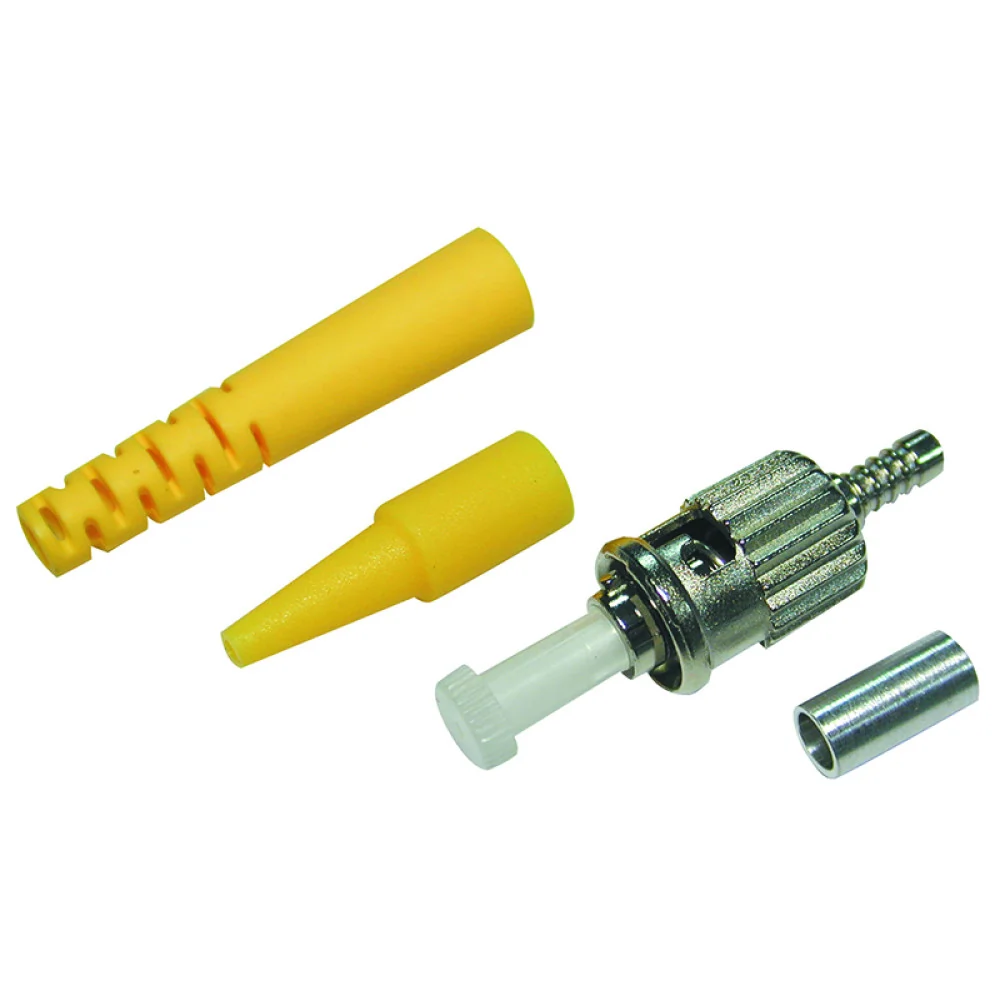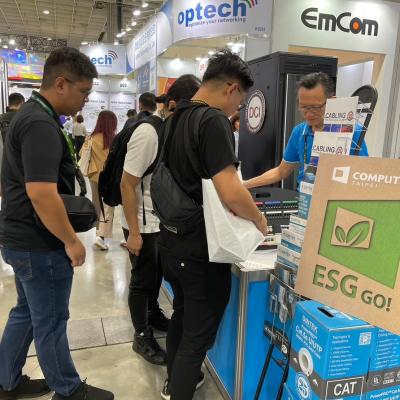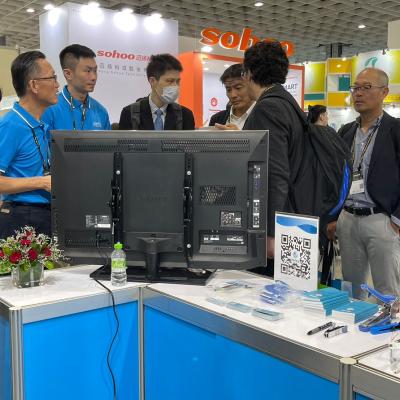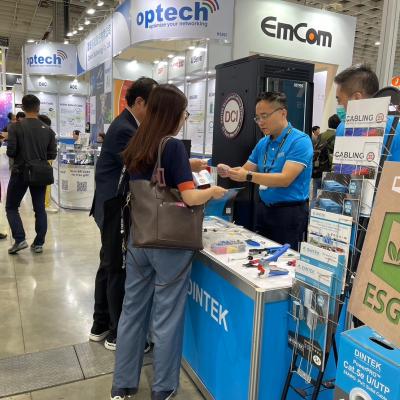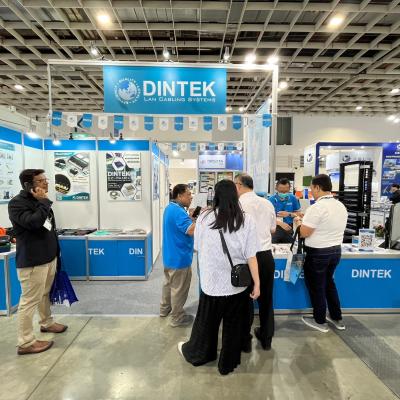Choosing the correct fiber optic products for your project
Whether you're planning to upgrade your business's data infrastructure, expand your internet service, or embark on a complex industrial project, choosing the right fiber optic products is critical to ensuring the success of your endeavor. This article explores the key factors to consider when selecting fiber optic products for your project, helping you make informed decisions that align with your specific needs and goals.

Multimode or singlemode cable?
When selecting fiber optic cables, one of the initial considerations is determining the "mode" of fiber required. The mode of a fiber cable dictates the manner in which light beams propagate within the cable itself. This distinction is crucial because the two modes are not interchangeable. Single-mode patch cords offer relatively limited variability, whereas multimode cords provide a range of options, designated as OM1, OM2, OM3, and OM4.
Essentially, these variants exhibit differing characteristics in terms of speed, bandwidth, and distance capabilities. The appropriate choice depends largely on the specific hardware they will be used with and any other fiber connections they are intended to interface with.
Multimode cable finds its niche in the transmission of high data volumes over relatively short distances when compared to singlemode fiber. Typical applications include Data Centers and other Local Area Network (LAN) setups. It's worth noting that the distance capabilities of multimode have improved over time, rendering it an economically viable alternative to singlemode cable for specific use cases. Multimode cable boasts a relatively sizable core, measuring either 50 or 62.5µm in diameter, which facilitates the simultaneous transportation of multiple data streams.
Singlemode cable is the choice of Telcos and CATV companies when they need to transmit signals over extensive distances. Businesses and institutions also rely on singlemode cable for long cable runs, such as interconnecting various buildings within a campus. The core diameter of single mode fiber is remarkably slender at 9µm, allowing only a single mode of light to pass through it at any given moment. This unique characteristic minimizes signal attenuation and enables the transmission of light over considerable distances. It's important to note that while the initial purchase cost of singlemode cable may be lower than that of multimode cable, the associated singlemode transceivers and network interfaces typically come at a higher price point compared to those used in multimode systems.
Indoor
or outdoor?
The primary distinction between indoor and outdoor fiber optic cables lies in their resistance to water. Over time, any conduit is likely to get moisture in it. Outdoor cables are meticulously designed to shield the fibers from prolonged exposure to moisture, making them ideal for enduring outdoor conditions. In contrast, indoor cables fall under the category of "tight-buffered" cables. These cables feature a glass fiber with primary and secondary buffer coatings, which collectively increase the fiber's diameter to 900 microns, or approximately 1mm (1/25 inch). This enlargement facilitates easier handling of the fiber.
Indoor fiber optic cables
Indoor fiber optic cables come in various types:
Simplex Cables: These have a single tight-buffered fiber with Kevlar strength members and a 3mm diameter jacket for indoor use.
Zipcord Cables: Essentially two simplex cables joined together, ideal for patch cords and desktop connections.
Distribution Cables: These house multiple tight-buffered fibers bundled under a common jacket, suitable for short conduit runs, riser installations, and plenum applications.
Breakout Cables: Consist of several simplex cables in a shared jacket for ruggedness. They are larger and pricier but excel in durability and limited device connections, ideal for industrial use.
Outdoor fiber optic cables
Outdoor fiber optic cables require protection against various outdoor conditions and are categorized into four main types:
Loose Tube Cables: These cables encase multiple fibers within a small plastic tube wound around a central strength member. They are compact and suitable for outdoor trunking applications. Some are filled with gel or water-absorbent powder to protect against water damage. They can be used in conduits, overhead installations, or direct burial.
Ribbon Cables: These cables offer high packing density, with fibers arranged in rows, often in groups of 12, resulting in a compact cross-section. Some designs include slotted cores with multiple ribbon assemblies, providing a high fiber count. Ribbon cables are gel-filled for water resistance.
Armored Cables: Designed for direct burial where rodents are a concern, these cables have metal armor between two jackets to prevent rodent penetration. They require proper grounding and are the preferred choice for outdoor direct burial.
Aerial Cables: These cables can be attached to a messenger cable or feature metal or aramid strength members, making them self-supporting. They are designed for outdoor installation on poles or similar structures, commonly used in the CATV industry.
Jacket type
Bandwidth
Both copper and fiber cable have jacket ratings to indicate the approved physical locations in which they are run. LSZH (Low Smoke Zero Halogen) rated cables emit little harmful smoke in case of fire, and are often the most widely available and cost-effective type of cables found. OFNR (riser) rated cables may be used behind a wall or between floors, and OFNP (plenum) rated cables may be used in plenum area to prevent spread of fire in absence of sprinkler system. Note that a higher rated cable may be used in areas that require lesser-rated ones. So, OFNP cables can be used in riser application, and OFNR cables can be used with patch panels.
Matching the right cable to the environment will minimize the hazards of fire, smoke and toxicity. When creating bids or bills of materials (BOMs), installers need to make sure that they are specifying the right cable for the job - both in performance and in safety.
Bandwidth determines the capacity of the network to transmit data, and choosing the right level of bandwidth is crucial to meet both current and future data demands. Inadequate bandwidth can result in network congestion, slower data transfer rates, and reduced overall performance. On the other hand, over-provisioning bandwidth can lead to unnecessary costs. Therefore, a careful assessment of the specific data requirements of your project, including factors like the number of users, types of applications, and expected data growth, is essential. By accurately gauging bandwidth needs, you can ensure that your fiber optic project delivers the high-speed, reliable connectivity required for today's data-intensive applications and remains adaptable for future technological advancements.
Matching the right cable to the environment will minimize the hazards of fire, smoke and toxicity. When creating bids or bills of materials (BOMs), installers need to make sure that they are specifying the right cable for the job - both in performance and in safety.
Type of connector

Fiber optic connectors serve as vital components that bridge the gap between two or more fiber optic cables, playing a crucial role within fiber optic cable networks. Essentially, these connectors are responsible for terminating the ends of fiber optic cables, facilitating effortless connections. Choosing the right type of fiber optic connector depends on the equipment and type of optical fiber you are installing.
If you know what equipment you will be using, you will be able to determine which style of connector to install. Single mode uses a 9/125 connector, which refers to the core and cladding diameter of the optical fiber (i.e. core of 9 µm and cladding of 125 µm). Multimode fibers require either a 50/125 µm (OM2/OM3/OM4) or 62.5/125 (OM1) connector. The three most popular styles are LC, SC, and ST.
LC and SC tend to be the most commonly used styles.
LC connector
SC connector
ST connector
FC connector
A Lucent connector (LC) is a connector with a 1.25 mm ferrule, half the size of an SC or ST connector. LC connectors are frequently used as their small footprint makes them ideal for high-density installations. Similarly, SFP (small form-factorable pluggable) modules and fiber optic extenders often require these connectors, although this varies by manufacturer. LC connectors, again, are smaller in size and feature a clip design.
DINTEK'S LC ezi-FIBERTM Connector
A 2.5 mm snap-in connector. SC (Square Connector) is arguably the most common type of fiber optic connector used today. Designed to be simple to use and inexpensive to produce, SC uses a push-pull design similar to LC but utilizes a locking tab instead of a latch to secure the unit. The cost-effective design of SC makes it a popular choice with industries that frequently use fiber cables, such as telecom and datacom.
DINTEK'S SC Multimode Epoxy Connector
ST (Straight Tip) connectors are a 2.5 mm designed connector that stays in place with a half-twist bayonet mount. They are usually used in both long and short distance applications such as campuses and building multimode fiber applications, corporate network environments, as well as military applications.
DINTEK'S ST Singlemode Epoxy Connector
The FC (Ferrule connector) was the first optical fiber connector to use a ceramic ferrule, but unlike the plastic-bodied SC and LC, it utilizes a round screw-type fitment made from nickel-plated or stainless steel. Initially intended for datacoms and telecoms applications, its use has reduced since the introduction of the SC and LC. These deliver similar performance to the FC, but both have less expensive components and are quicker to connect. However, the screw-on collet of the FC does make it particularly effective in high vibration environments, ensuring that the spring-loaded ferrule is firmly mated.
DINTEK'S FC Singlemode UPC Epoxy Connector
Polish type
Connectors are available with differently polished endfaces, which impact the connector’s level of return loss (back reflection). Singlemode connectors are available either as a UPC (Ultra Physical Contact) or an APC (Angled Physical Contact/Angled Polish Connector). UPC connectors are most commonly installed. These connectors have a slightly domed endface. For identification, singlemode UPC connectors are colored blue. APC connectors feature an 8 degree angle at the endface. This decreases their return loss. However, APC connectors have very specific applications (GPON, FTTx, etc.) and used only when equipment requires them. APC connectors are commonly used by service providers, or for very long distance transmission. For identification, APC connectors are colored green. Due to the angle of an APC connector, it cannot be mated to a UPC connector. These connector types are not interchangeable, so it is very important to verify whether your installation requires UPC or APC connectors.

- Do the equipment you are connecting to require LC, SC, or ST connectors?
- Are you installing singlemode or multimode fiber? If multimode, what is the grade (OM1/OM2/OM3/OM4)?
- If you are installing singlemode fiber, the most common connector type will be UPC (blue). UPC is the default if there is no indication that APC is required. If your equipment specifically requires APC (green), you must install all angled polish connectors.
Other important factors to consider for your fiber project:
Distance
Environmental conditions
Budget
Durability
The choice of fiber optic products, cables, connectors, and installation methods should all align with the unique environmental challenges your project may face. Factors such as temperature extremes, humidity, exposure to water or chemicals, physical wear and tear, and even the presence of rodents or vermin can greatly impact the performance and longevity of your fiber optic network. Failure to account for these conditions can result in signal loss, equipment damage, and costly repairs. Therefore, a comprehensive assessment of the project's environmental conditions is essential to select the appropriate materials and strategies that ensure the durability and reliability of your fiber optic infrastructure in the face of real-world challenges.
While it's essential to meet the technical requirements of your project, staying within budget constraints is equally crucial. Fiber optic projects can encompass a range of expenses, including cables, connectors, installation labor, and equipment. Overextending the budget can strain financial resources and hinder the overall viability of the project. Conversely, underspending might compromise the quality and performance of the network. Striking the right balance between technical requirements and budgetary constraints ensures that the project is not only feasible but also cost-effective. It's vital to meticulously plan and allocate resources to achieve the desired network capabilities without unnecessary expenditures, thereby ensuring the successful implementation of your fiber optic project.
You should also take durability into account when choosing a fiber optic cable. The ability to withstand potential damage is important for the reliability and life cycle of your network. To protect vital communication paths from interruptions, the best fiber optic cable to choose is a ruggedized one. They embody superior sturdiness that can withstand damage from various environmental stressors. Whether they’re exposed to the elements or run over by heavy machinery, they won’t be affected.
Conclusion
In conclusion, selecting the right fiber optic products for your project is a pivotal decision that can significantly impact the efficiency and effectiveness of your network or application. The wide variety of fiber optic cables, connectors, and other components available in the market offers a multitude of options to meet specific project requirements. To make an informed choice, it is essential to consider factors such as the type of project, bandwidth needs, transmission distance, environmental conditions, and budget constraints.
Additionally, consulting with experienced professionals or experts in the field can provide valuable insights and guidance in choosing the most suitable fiber optic products. Ultimately, investing time and effort into the selection process ensures that your project benefits from reliable, high-performance fiber optic solutions that meet your unique needs, both now and in the future. Making the right choices in fiber optic products is an integral part of building a robust and future-proof communication infrastructure.
Contact us on





